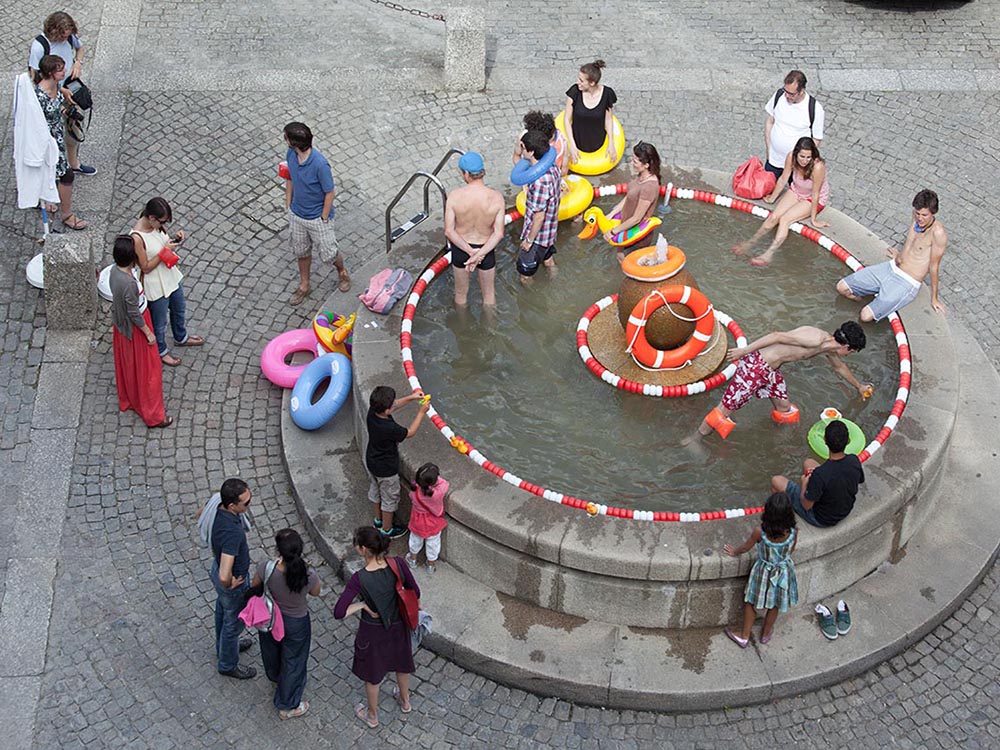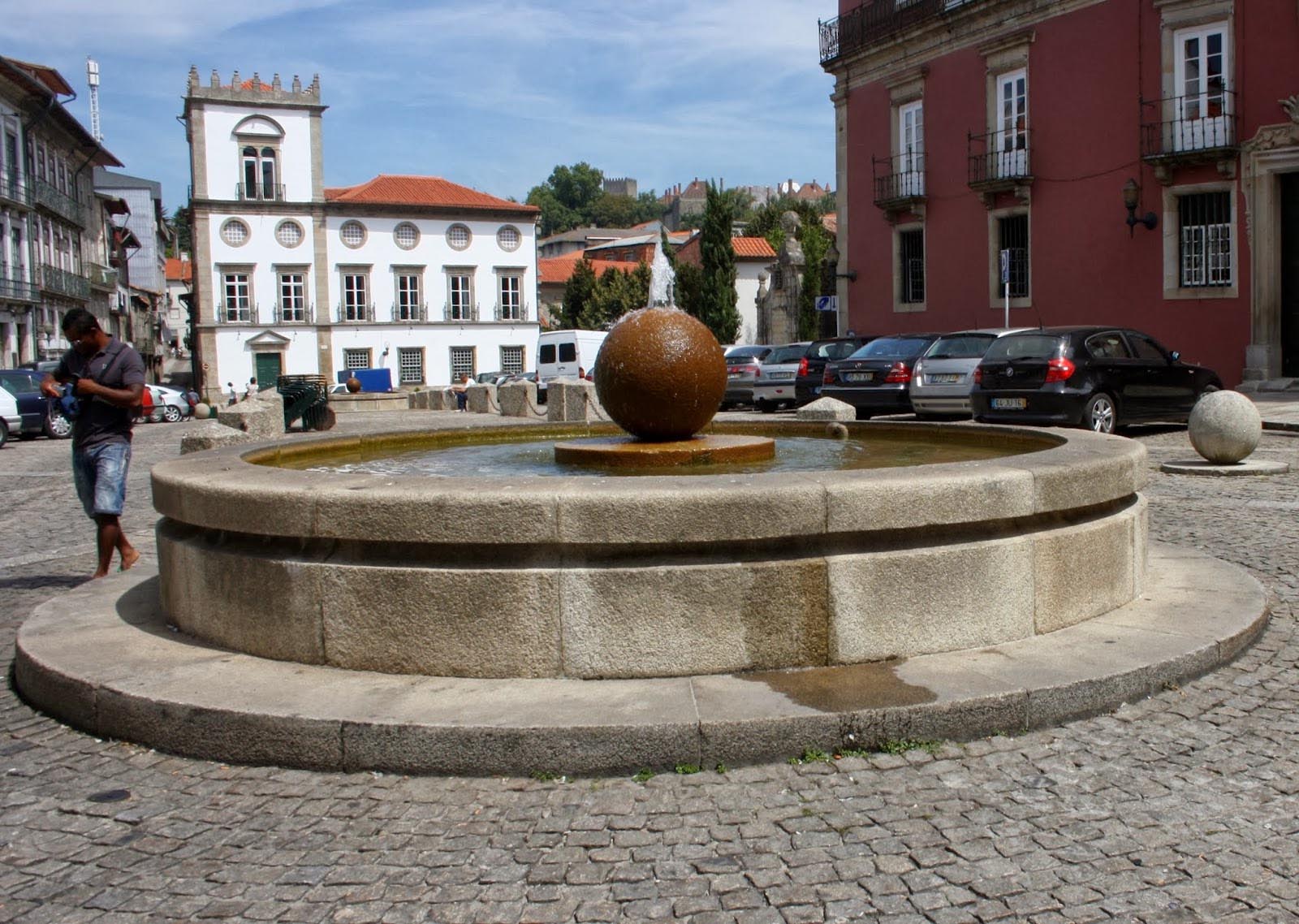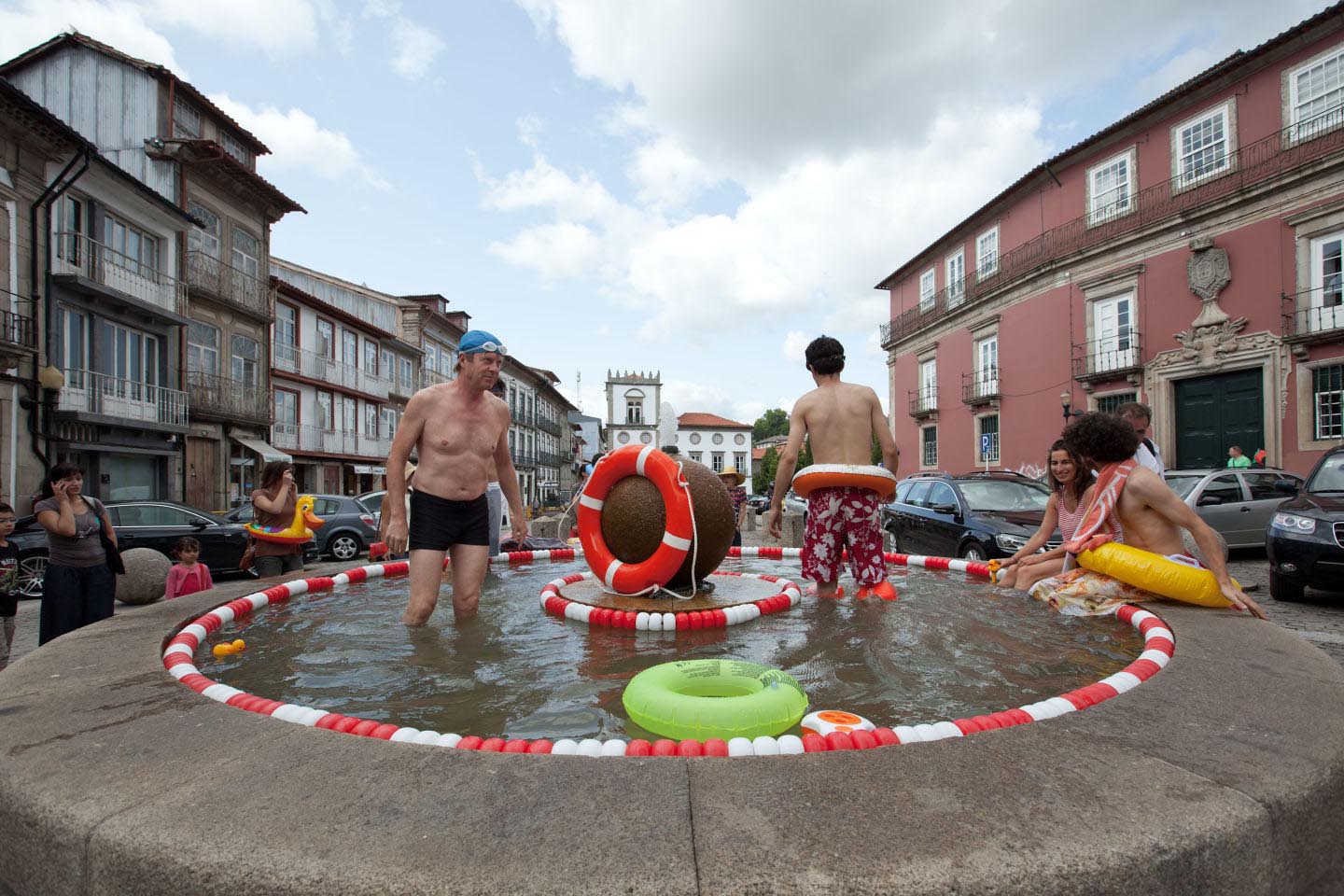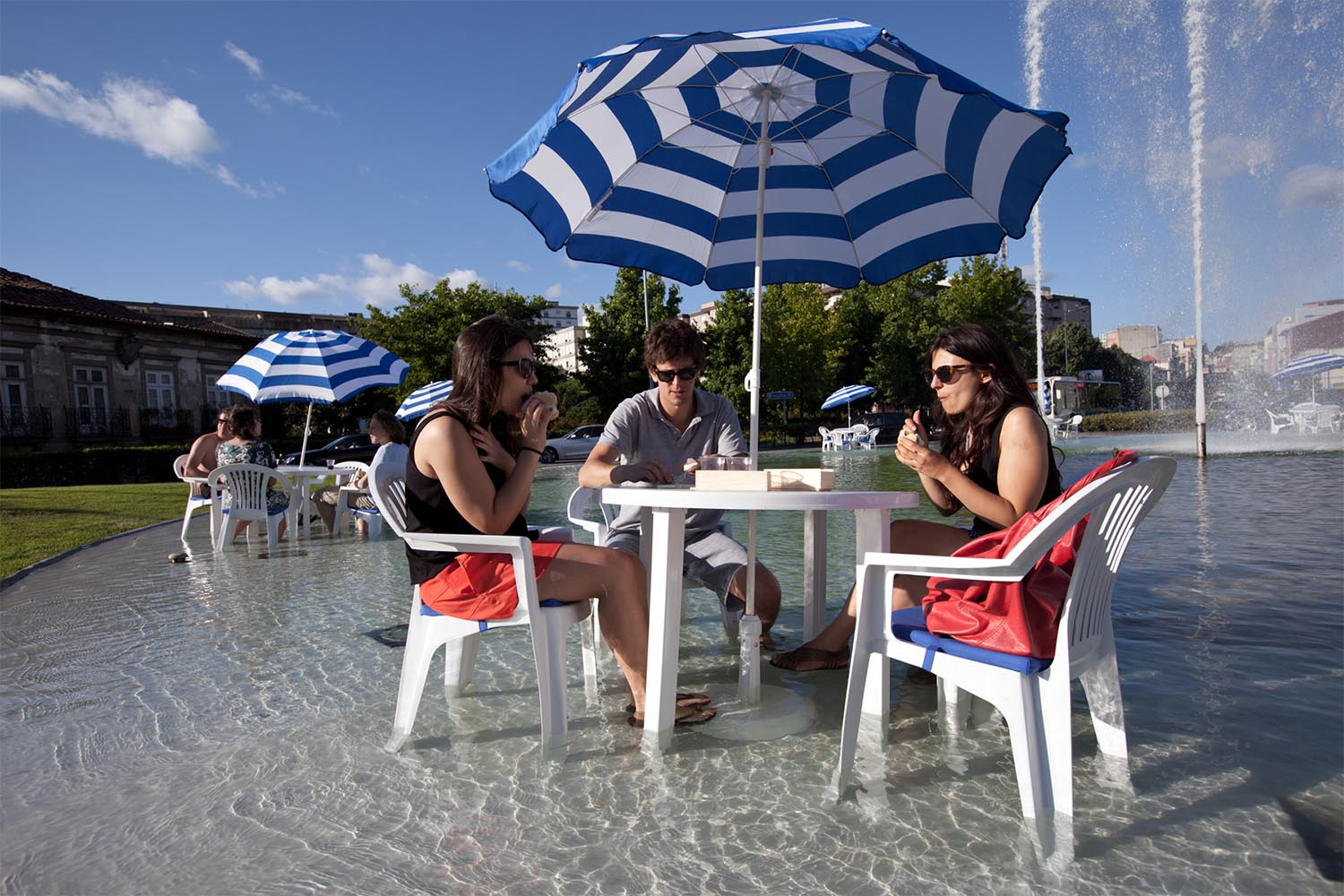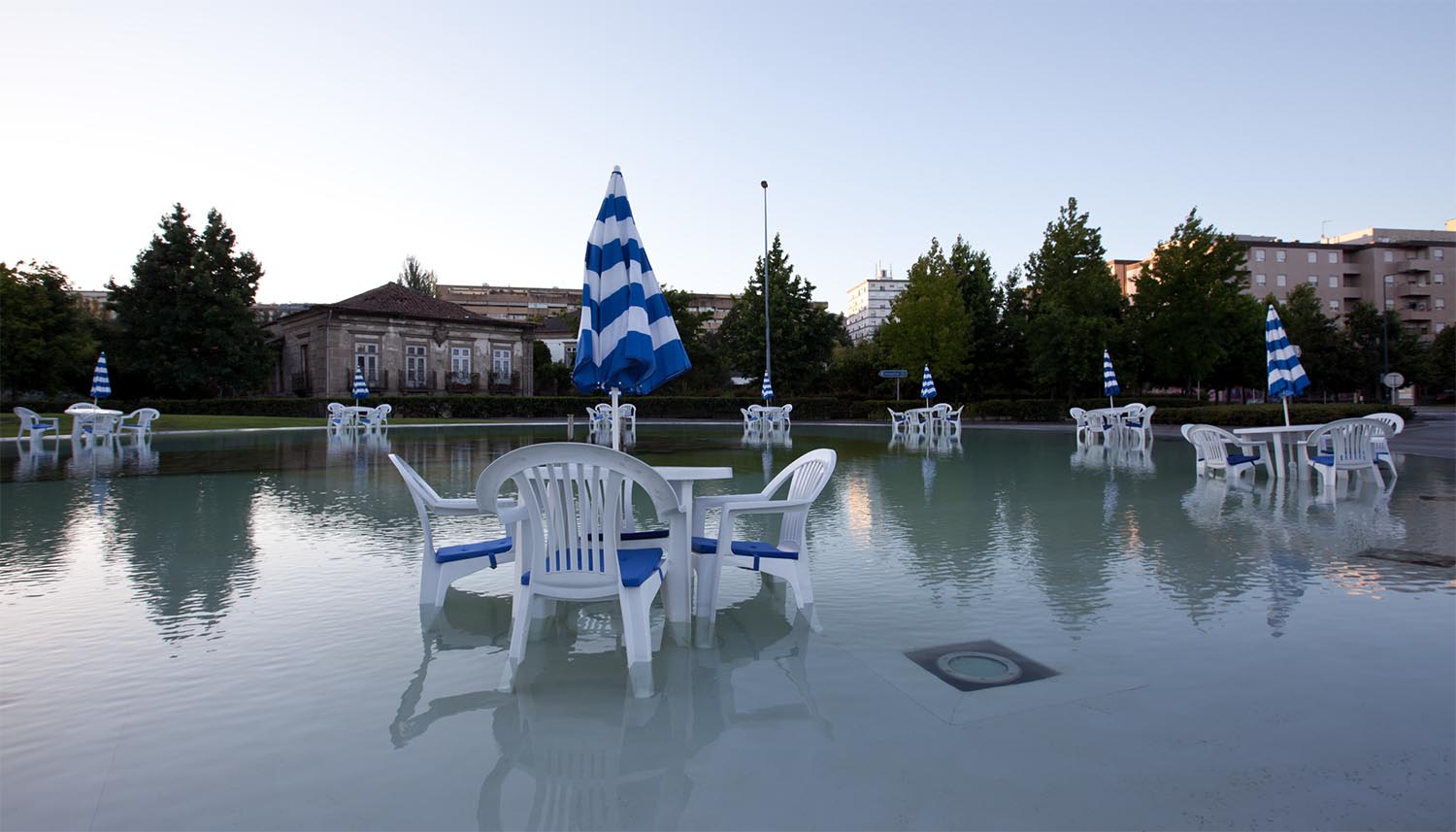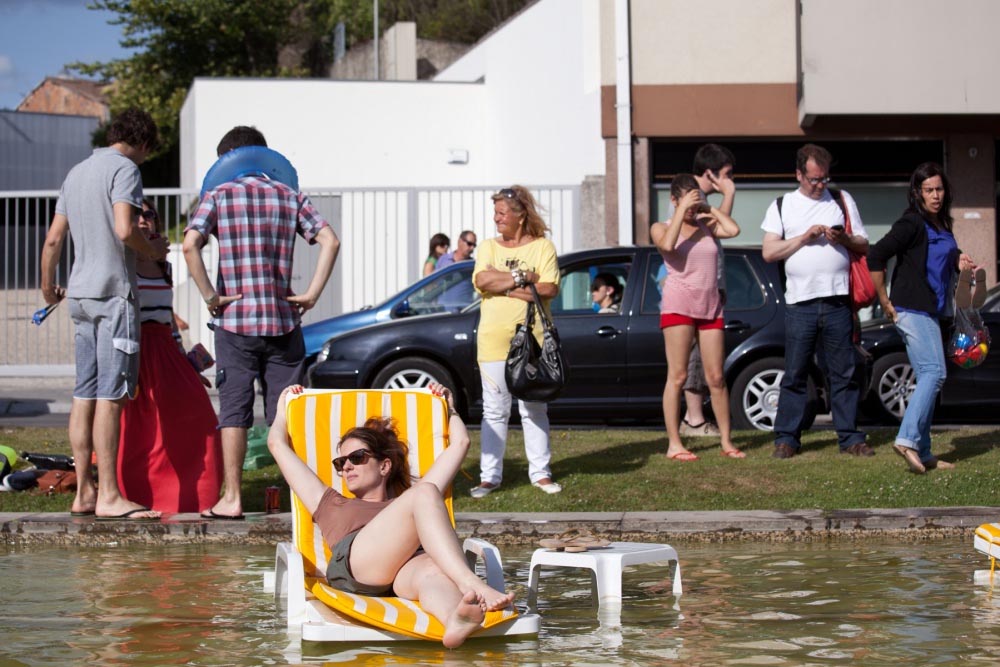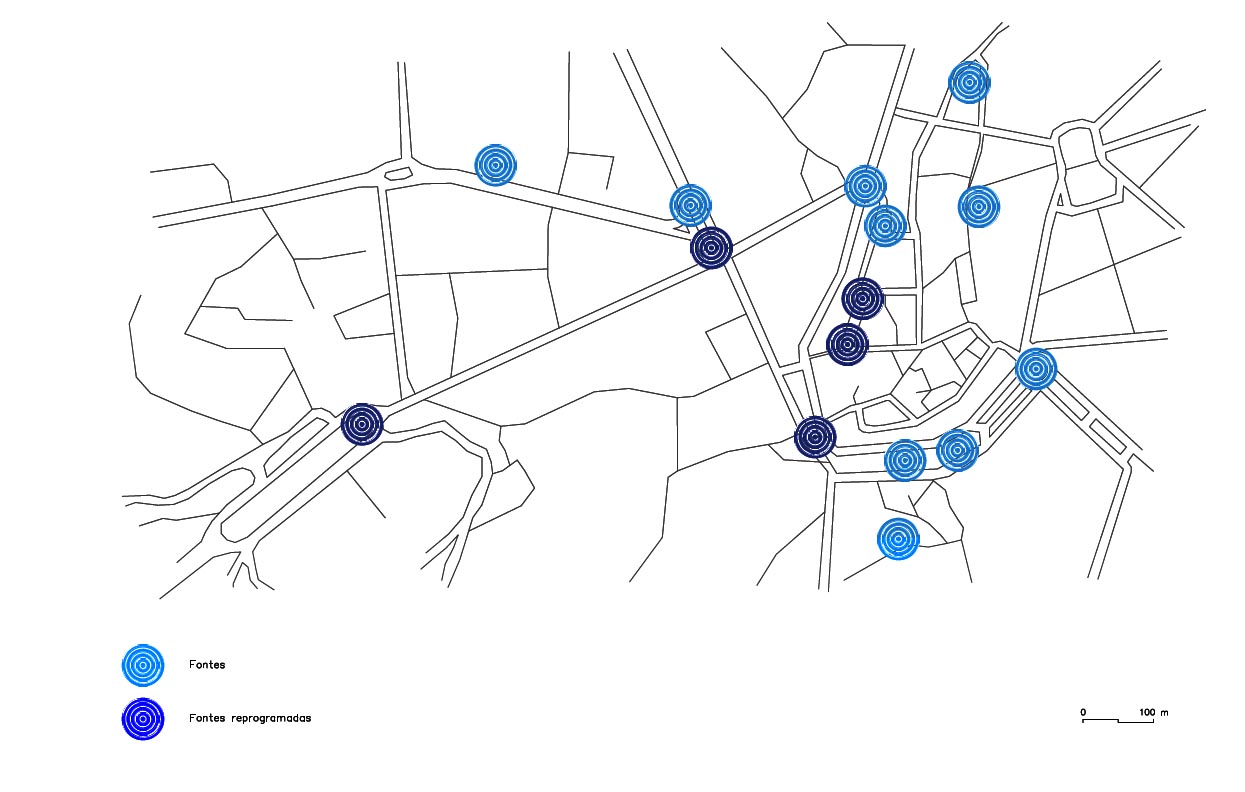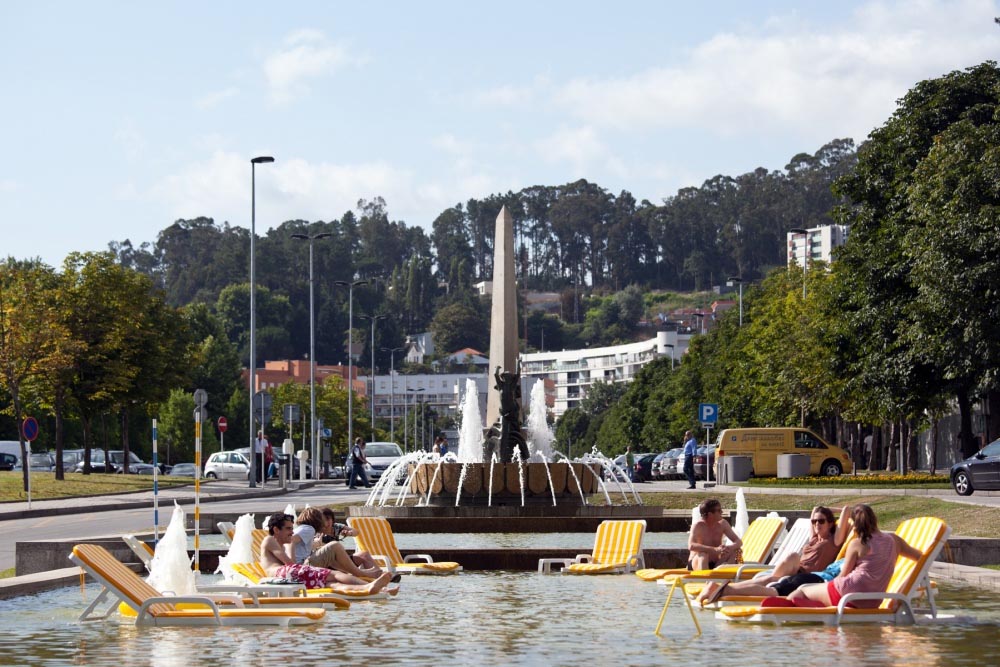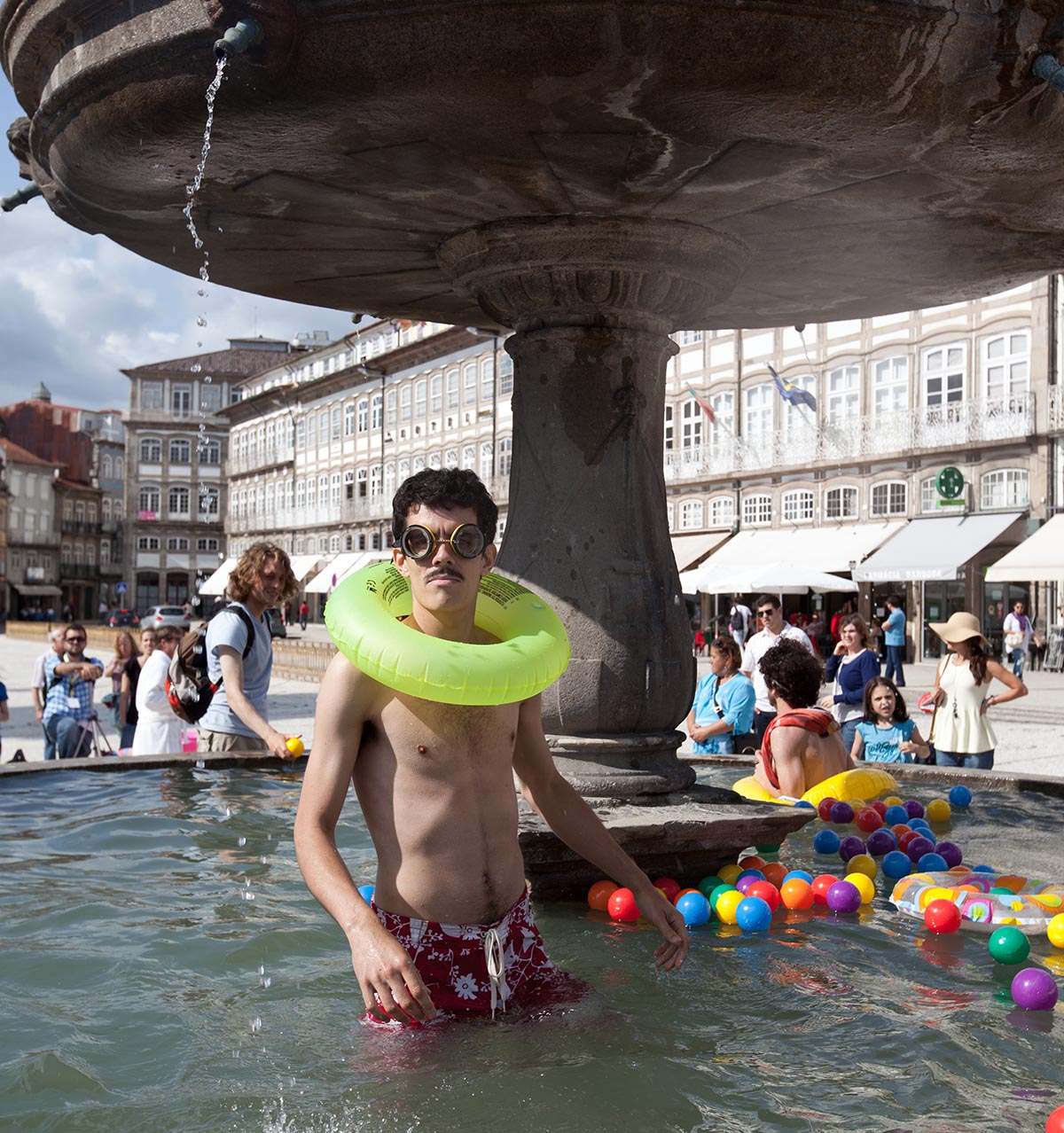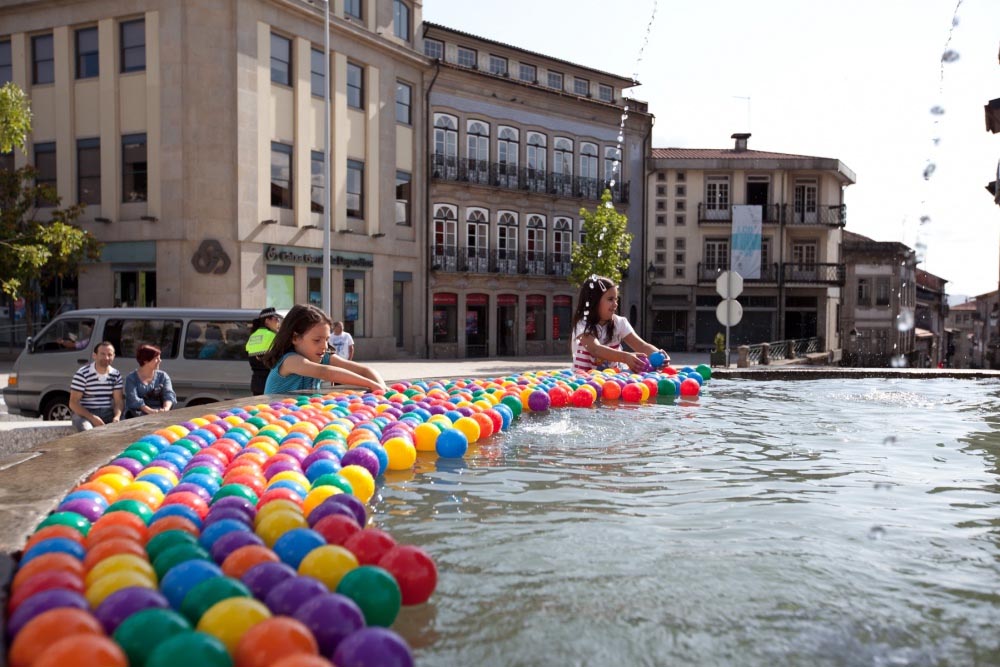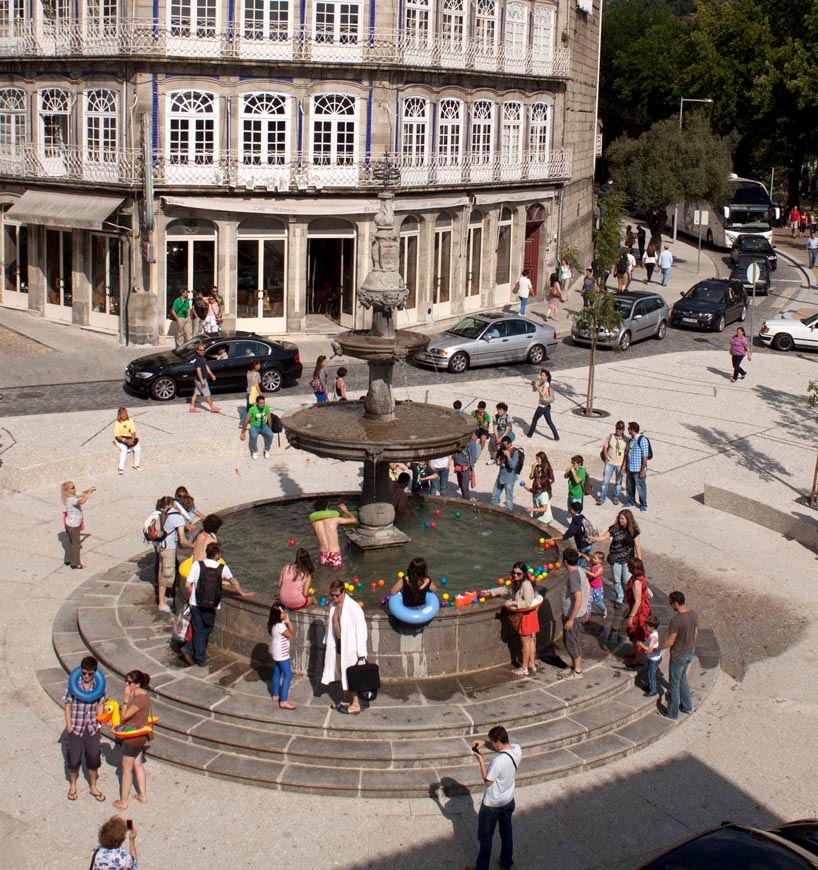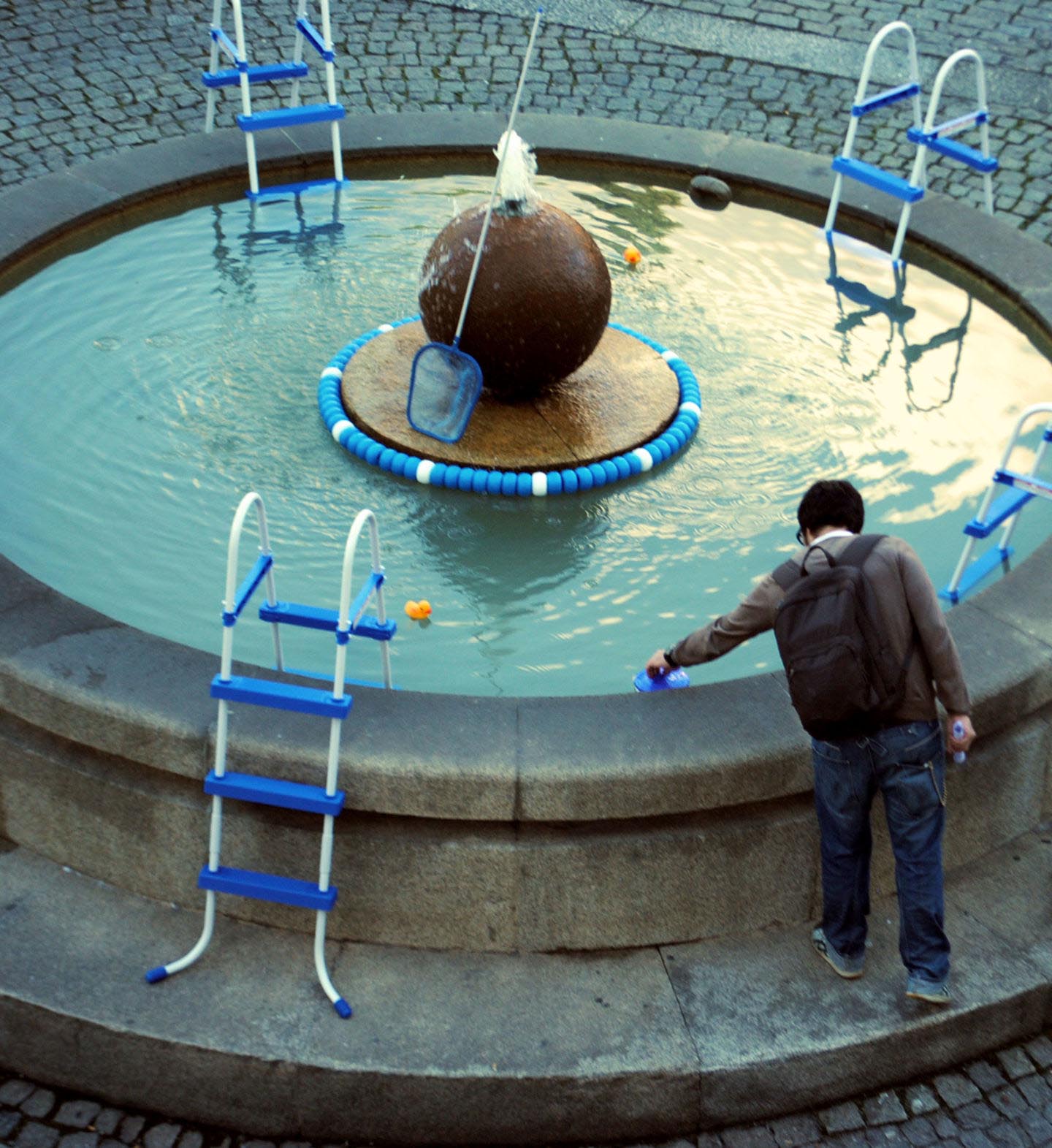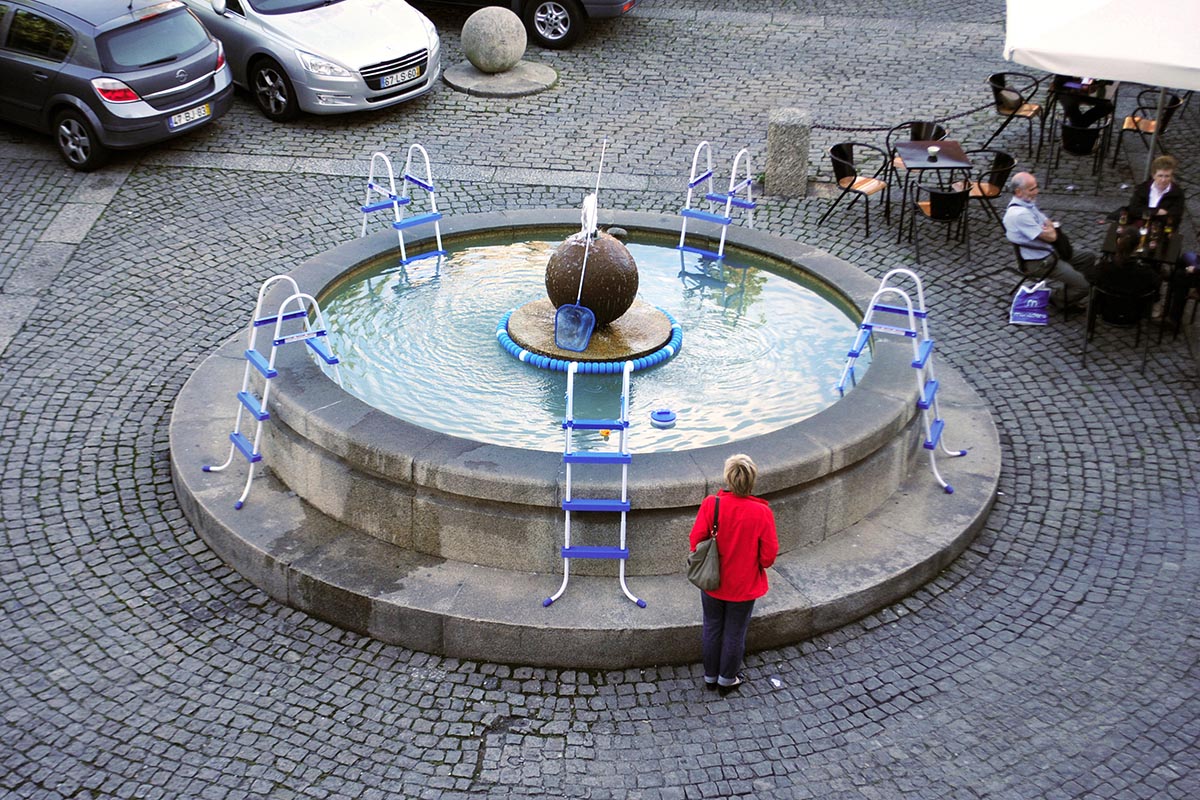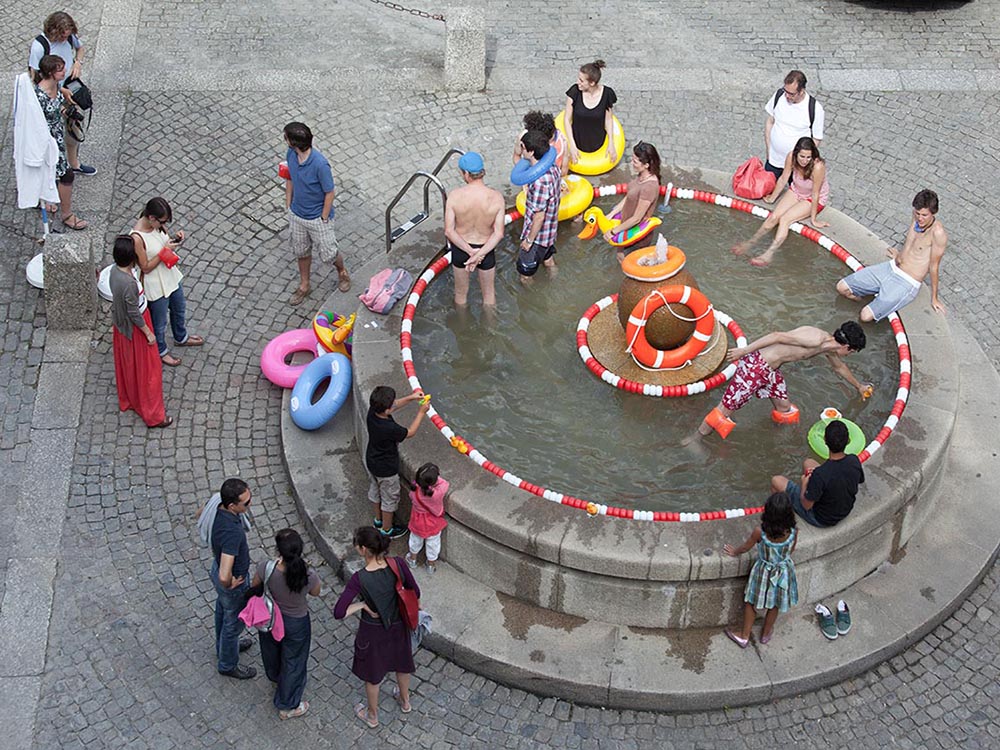Previous state
Public fountains which, since antiquity, have provided water for drinking, washing, cooking, watering livestock and doing the laundry, have been losing their functions to end up as merely monumental or decorative. Such is the case of the city of Guimarães and its array of fountains, both in the medieval centre, which is inscribed in the UNESCO World Heritage List, and in the more outlying neighbourhoods. Indeed, since Guimarães is in the centre of Portugal and the summers are very hot, its inhabitants would be much better refreshed by the cool waters of the fountains than by remaining indoors in air-conditioned rooms.
Aim of the intervention
This was precisely the idea of “Fountain Hacks”, the prize-winning initiative in the “Performance Architecture” competition organised by the City Council in order to celebrate the fact that Guimarães had been named European Capital of Culture. The idea, backed by a grant of €12,000, consisted of a series of temporary interventions in the city’s public fountains during the summer months of June, July and August. The aim was to make them accessible and welcoming so that people would dare to occupy them in a playful and festive spirit. In essence, the project wished to probe the limits of urbanity, questioning social barriers in order to bring about unusual kinds of promiscuous interaction between people and their physical surroundings.
Description
The “Fountain Hacks” initiative mapped out a series of fountains which were selected according to their representativeness and the possibilities offered by their immediate settings. Once their locations had been identified, the fountains thus chosen laid out a circuit which re-created a cityscape of aquatic monuments. Each one was the object of a different kind of intervention, always economical, using low-tech means and easily reversible. The method was reminiscent of urban guerrilla tactics: fast, simple and maximally effective. Re-baptised with humorous and irreverent names, the monuments were profaned with inflatable toboggans, domestic showers, beach changing rooms, bright sunshades, plastic deck chairs and foldaway chairs. The public responded enthusiastically and came to enjoy them equipped with sandals, hats, sunglasses, swimming costumes and striped beach towels.
In Largo da Misericórdia Square, a round, austere and solemn fountain topped with a metal ball was named “Olympic Pool” in one “Fountain Hack” sally which decked it out with iron steps and the typical ropes and floats used to mark out swimming lanes. The baroque fountain in Largo do Toural Square, also situated in the old centre of the city, was transformed into “Playland Pool”, a space full of floaties and the brightly coloured balls children love to play with. In the shallow water of the pool in Alameda del Doctor Alfredo Pimenta, which is presided over by a fountain with an obelisk, plastic deck chairs and coffee tables were installed to give a relaxed atmosphere to “Beach Lounge”. On similar lines, the water of the circular pond in Parque da Cidadewas equipped with groups of chairs and tables with sunshades so that people using them could enjoy the “Barbecue Fountain” with their feet in the water.
Assessment
Far from scoffing at the city’s heritage, initiatives like “Fountain Hacks” can humanise monuments. Fountains which tend to be overlooked in everyday existence were startled out of routineness by a carnival-like spirit that defied a wide range of norms including museumisation of the urban environment, municipal regulations on civic-mindedness and the banality wrought by tourism in so many neighbourhoods.
Caught up in this extravagant but glamorous spirit, the fountains of Guimarães became a setting for provocation and promiscuity. For a brief summer period passers-by were unable to resist the sounds of bubbling water which seemed to be whispering, “Come on, I dare you to put your feet in me like you’ve always wanted to do.” And this is what they did. Without needing a football team to win a championship but emulating the free spirit expressed by Marcello Mastroianni and Anita Ekberg when they waded into the water of Trevi Fountain in Federico Fellini’s La dolce vita, they took to the waters of their city’s fountains.
David Bravo
Translation by Julie Wark
[Last update: 02/07/2021]


